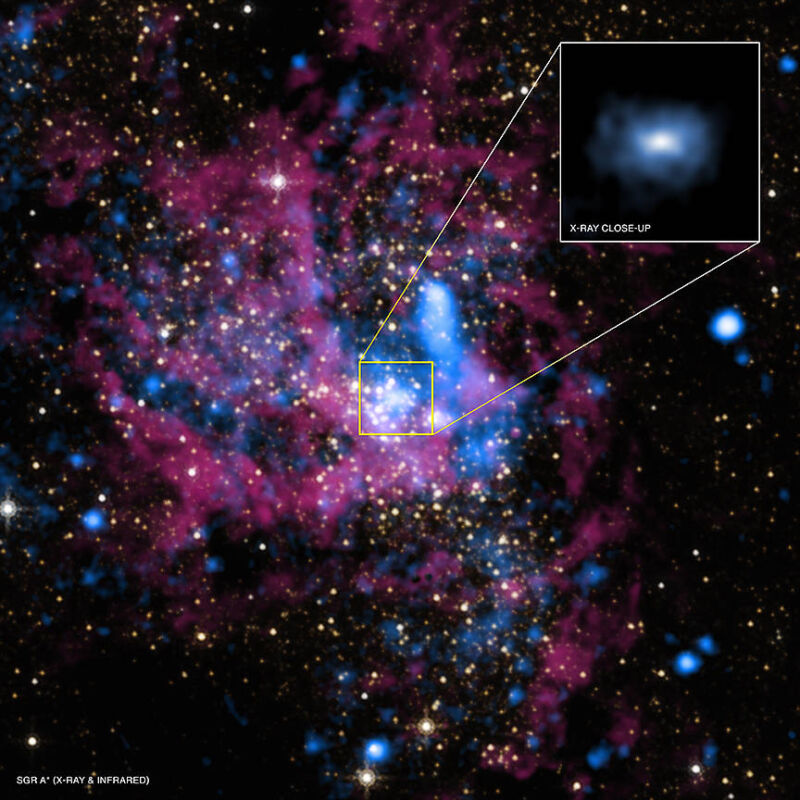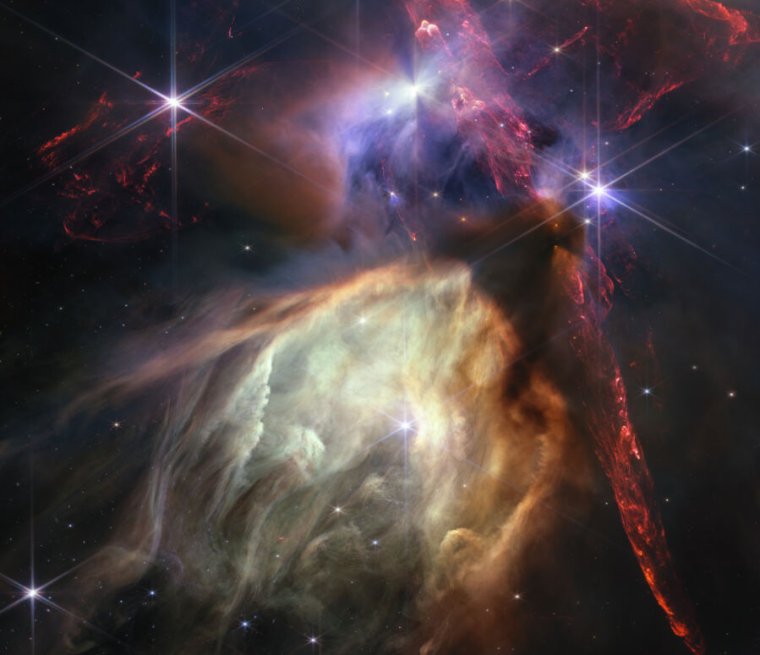Swarm of dusty young stars found around our galaxy’s central black hole

Enlarge / The Milky Way's central black hole is in a very crowded neighborhood. (credit: UMass/D.Wang/NASA/STScI)
Supermassive black holes are ravenous. Clumps of dust and gas are prone to being disrupted by the turbulence and radiation when they are pulled too close. So why are some of them orbiting on the edge of the Milky Way’s own supermassive monster, Sgr A*? Maybe these mystery blobs are hiding something.
After analyzing observations of the dusty objects, an international team of researchers, led by astrophysicist Florian Peißker of the University of Cologne, have identified these clumps as potentially harboring young stellar objects (YSOs) shrouded by a haze of gas and dust. Even stranger is that these infant stars are younger than an unusually young and bright cluster of stars that are already known to orbit Sgr A*, known as the S-stars.
Finding both of these groups orbiting so close is unusual because stars that orbit supermassive black holes are expected to be dim and much more ancient. Peißker and his colleagues “discard the en vogue idea to classify [these] objects as coreless clouds in the high energetic radiation field of the supermassive black hole Sgr A*,” as they said in a study recently published in Astronomy & Astrophysics.
